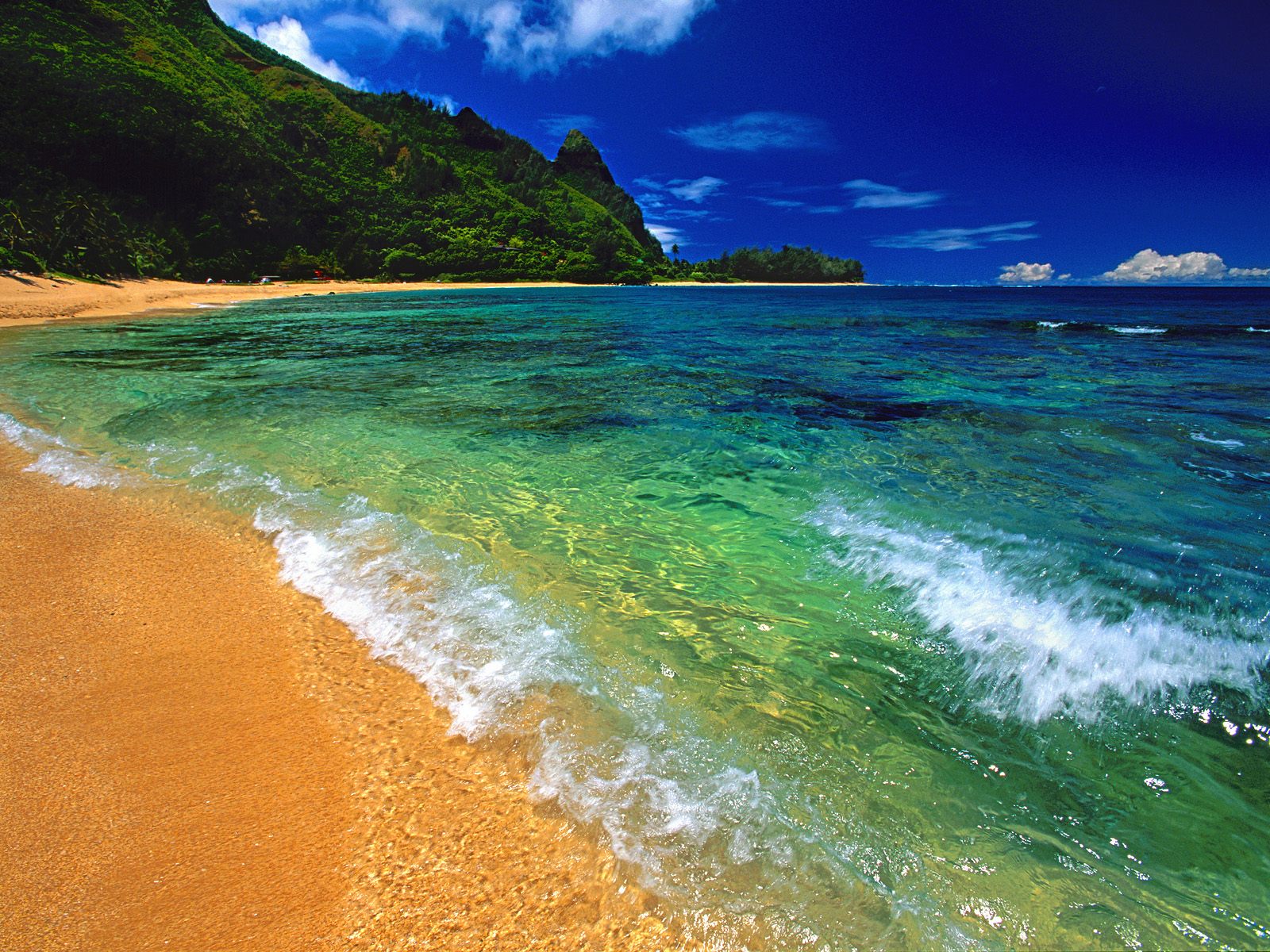10. Galápagos, Ecuador
The wild islands of the Galápagos continue to lure travelers 600 miles west of Ecuador. Where else can you watch a marine iguana dive for seaweed beneath a circling blue-footed booby? To better protect the landscape, cruises are now capped at 15 days with no repeated ports, though they remain the best way to see this perennial World’s Best Awards winner (in 2010 it was ranked No. 1 island overall). Which itinerary to choose? GalaOdyssey’s new 16-passenger Galápagos Grand Odyssey luxury yacht pampers guests with Jacuzzis and a spa while en route to a stop at sea-lion central Mosquera.

9. Maui, Hawaii
Within the Hawaiian-island family, Maui is the celebrity sibling: radiantly beautiful, a bit rebellious, and with glamour to spare. The island has attracted “seekers” for its healing energy since the 1960s and, more recently, Internet millionaires and Hollywood A-listers who want to rejuvenate in five-star spas. Readers love it for its natural attractions and sights and activities, such as the Maui Film Festival every June—your best bet to hobnob barefoot with Kristen Bell or Zac Efron.

8. Kauai, Hawaii
It may be the most dramatic vista anywhere in Hawaii: from the bluffs above the eastern tip of Hanalei Bay, on the north shore of Kauai, you look out on a crescent-shaped beach. Tireless waterfalls spill from jagged cliffs in deep green valleys. A rain shower rolls across the far side of the bay while the sun blazes down on you. Though the island’s World’s Best ranking fell slightly this year, the recently renovated St. Regis Princeville Resort, 252 spacious rooms carved into a cliff, is a slice of paradise. Don’t miss the private Pali Ke Kua Beach, where the only other living creature might be a sea turtle laying her eggs.

7. Big Island, Hawaii
The Big Island of Hawaii is a little bit country and a whole lot of lava rock and roll—especially whenever Kilauea is pouring hot magma into the Pacific at Hawaii Volcanoes National Park on the eastern shore. (Check with the park service for eruption updates.) Far from urban Honolulu, this mostly rural island has its own cowboy culture, farmers’ markets, tropical rainforests, and black-, green-, and white-sand beaches. It’s this local flavor that resonates with travelers now: this year was the first that the Big Island surged past Maui and Kauai to capture the No. 1 island in the region.

6. Sicily, Italy
A historical feast with 300 days of sun per year, spectacular landscapes, and a vibrant culinary scene, Sicily is becoming one of Italy’s buzziest destinations, and received its highest score yet in the 2011 World’s Best Awards. On this Italian island, there’s a new respect for heritage, and the hotel sector is on the upswing. The most trumpeted debut, the Verdura Golf & Spa Resort—part of the Rocco Forte Collection—has focused the spotlight on a handsome swath of the southern coast. And Orient-Express recently renovated two classic hotels in Taormina, the Grand Hotel Timeo and the Villa Sant’Andrea.

5. Great Barrier Reef Islands, Australia
Though the competition for No. 1 island in Australia, New Zealand, and the South Pacific is steep (consider Bora-Bora, Fiji, and Tasmania), the Great Barrier Reef, which unfurls from Australia’s northeastern coast, has taken the No. 1 spot seven times since 1998. The area’s spectacularly cerulean water and vast sweep of coral teems with sea life—baleen whales, leatherback turtles, giant clams, and 400-odd other species. Above the surface, it’s a menagerie of a different kind: a collection of hotels and island resorts, each with its own oceanfront appeal.

4. Boracay, Philippines
Now that even tiny islands such as Koh Samui are becoming mainstream, Boracay, in the Philippines, may be one of the last little-known Asian beach getaways. The sandy-shored speck is accessible via a hour-long flight from Manila to Caticlan, followed by a 10-minute ferry ride. Go now, before the crowds arrive. Already a growing number of travelers are lured by five-star properties, from the Shangri-La Boracay Resort & Spa to Discovery Shores. As proof of its rising profile, 2011 is the first year Boracay has ranked in the World’s Best Awards.

3. Cape Breton Island, Nova Scotia, Canada
Cape Breton Island is located off the eastern end of the peninsula of mainland Nova Scotia in eastern Canada. The island is about 100 miles north-south and 70 miles wide east-west. The geography of the island is complicated dramatically by the Bras D'Or Lakes, a 1,100 km², an inland extension of the North Atlantic that fills much of the center of the island creating a wealth of small peninsulas and bays separated from either other by large bodies of water. The southern part of the island is relatively flat, This has no doubt added to the isolation of many communities until quite recently. Most of the population lives on the eastern seaboard, the site of many, recently closed under-sea coal mines and steel mills. Music is strong all over the island, but particularly in Inverness County along the western end of the island.

2. Bali, Indonesia
Lapped by the warm waters of the Indian Ocean, Bali is but one of 17,500 islands in the Indonesian archipelago, yet even among its colorful neighbors—and even after decades of tourism development—it stands alone in its lushness and incomparable beauty. Perhaps that’s the reason it’s been ranked the No. 1 island in Asia every year since 1998. Why go now? Resorts are making cultural relevance a priority, promising unique entrée into local art and architecture, cuisine, and traditional medicine.

1. Santorini, Greece
An ancient island that endured one of the largest volcanic eruptions in history, Santorini, 120 miles southwest of mainland Greece, feels like no other place on earth. Here, everything is brighter: the whitewashed cube-shaped houses, the lapis lazuli sea, and the sunsets that light up the caldera. So it seems about time that Santorini captured the No. 1 island title for the first time in World’s Best Awards

View the complete list at Travelandleisure.com